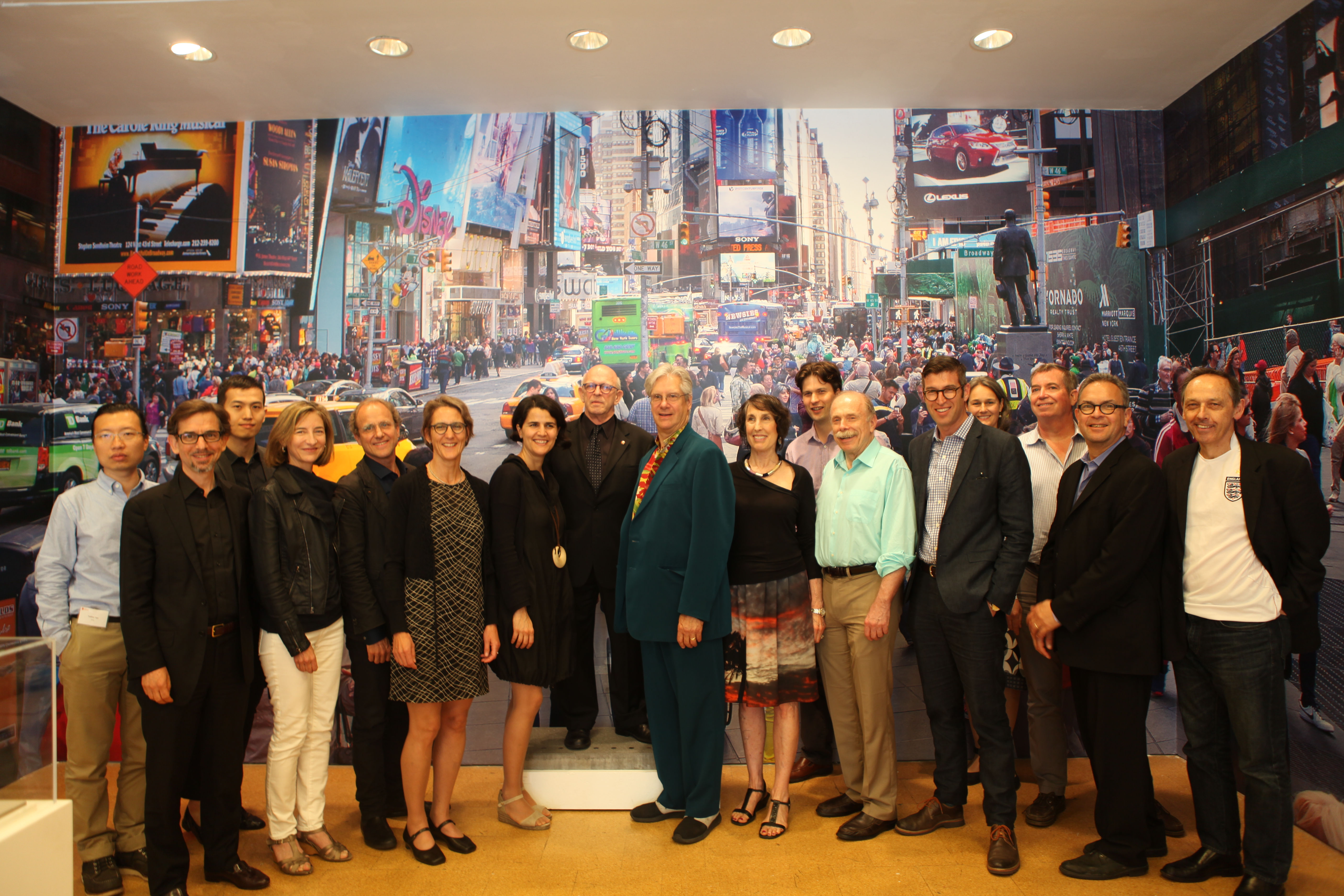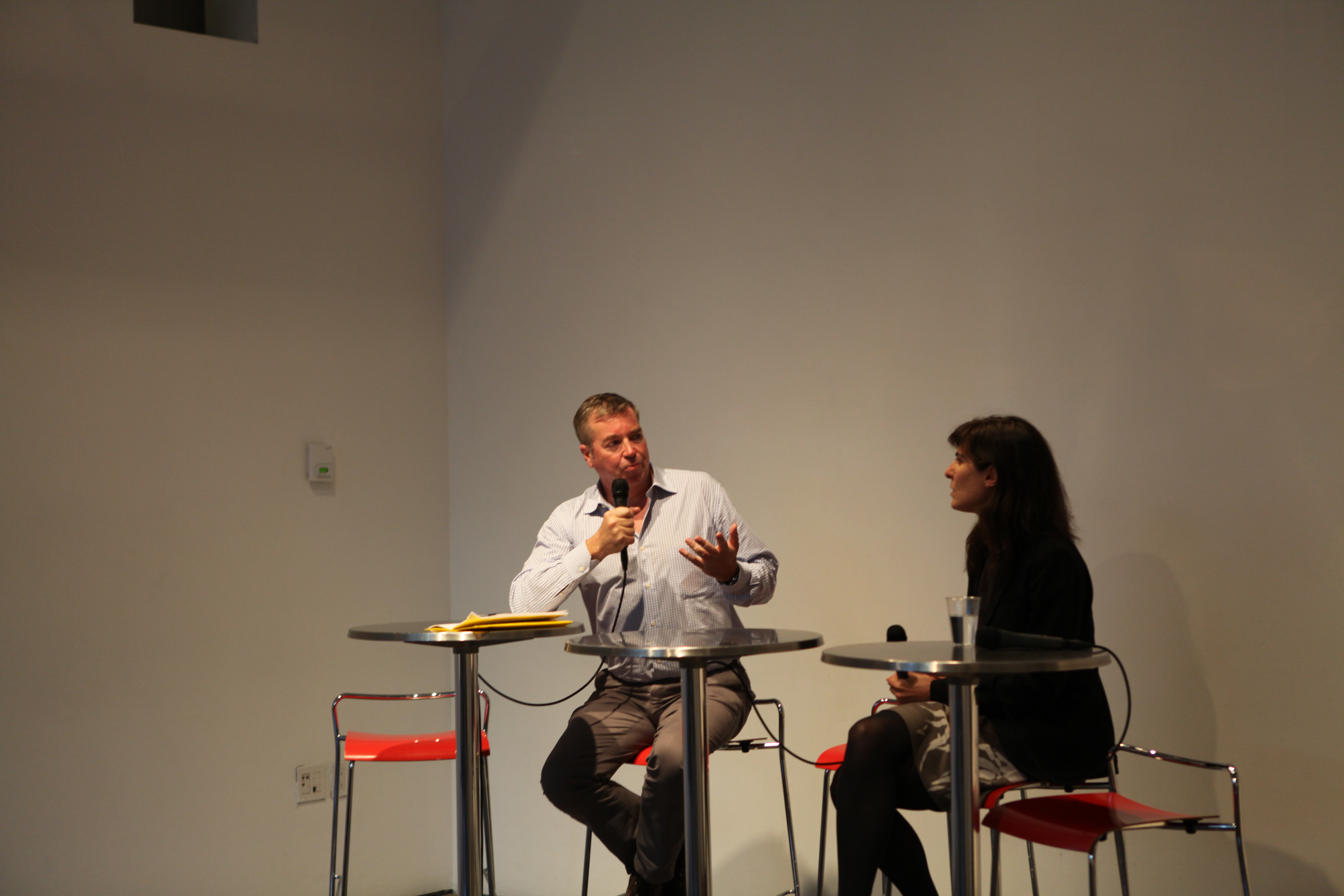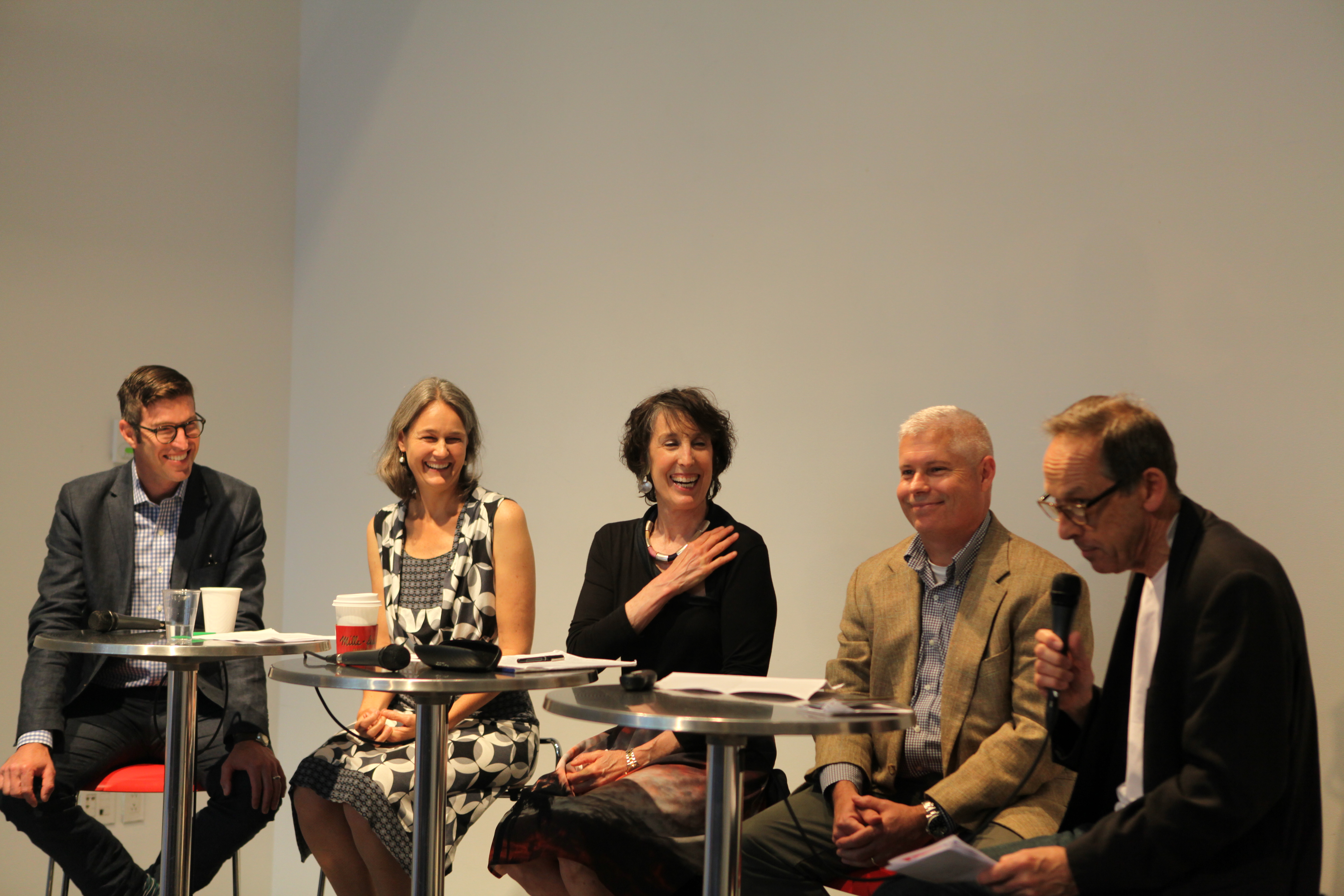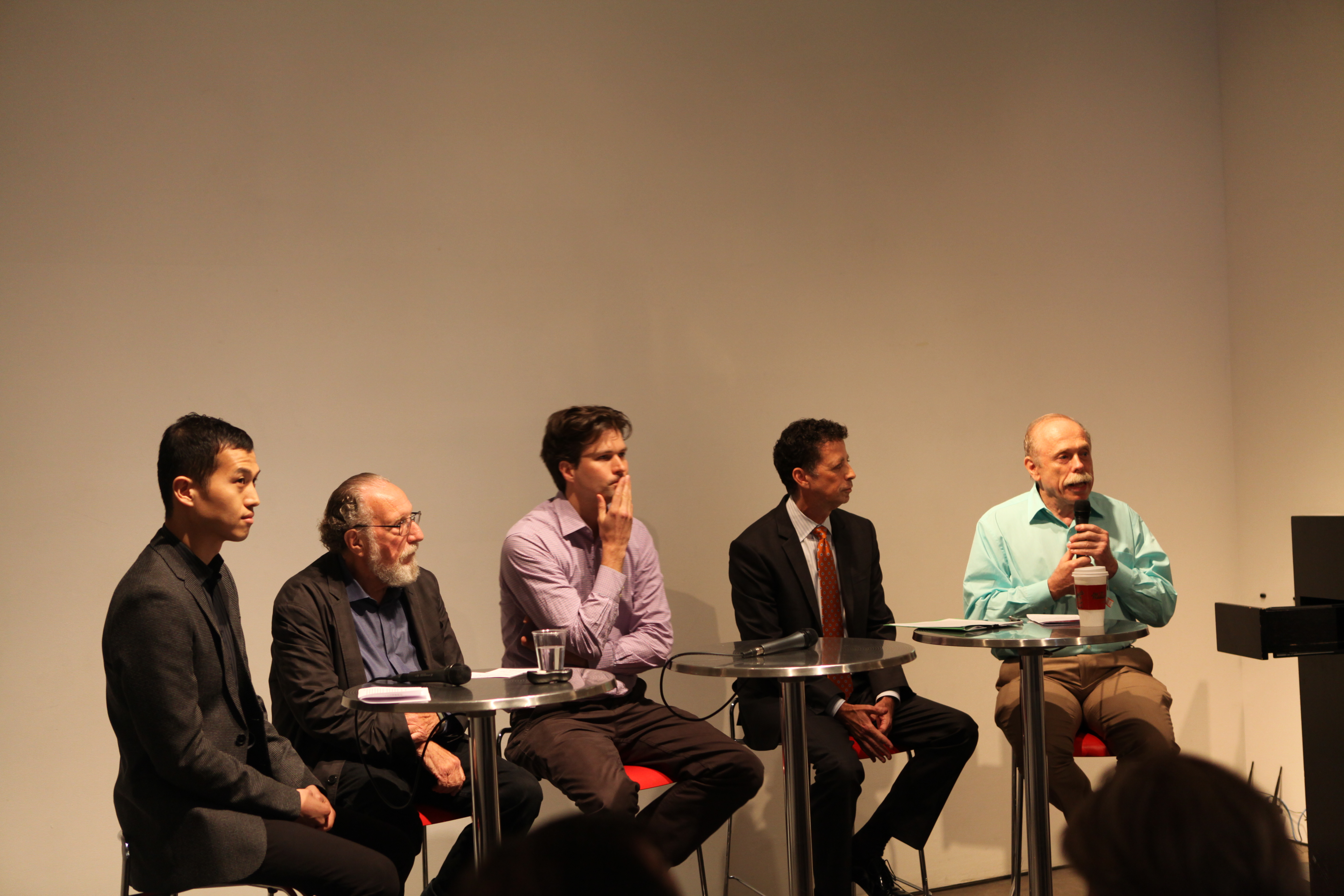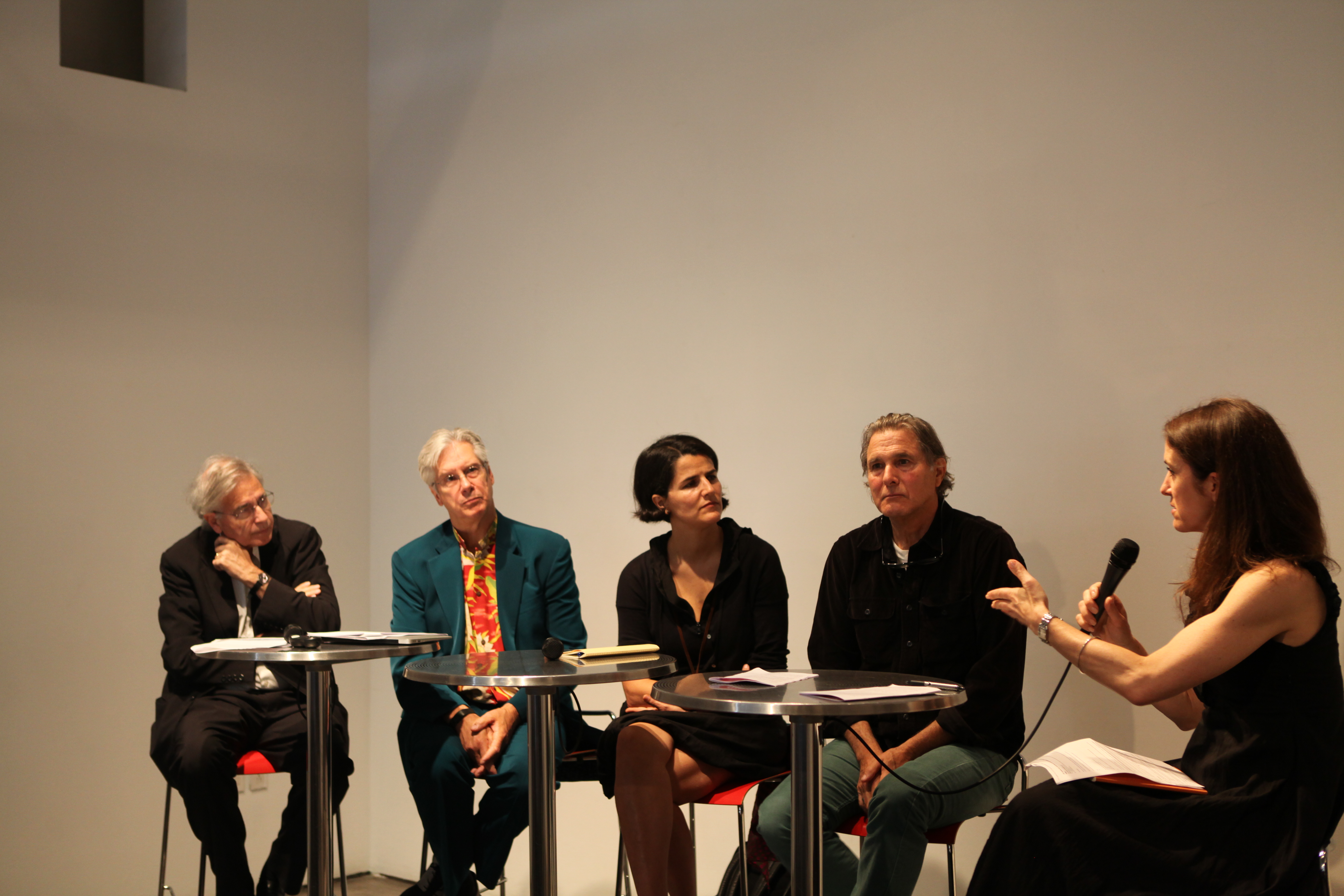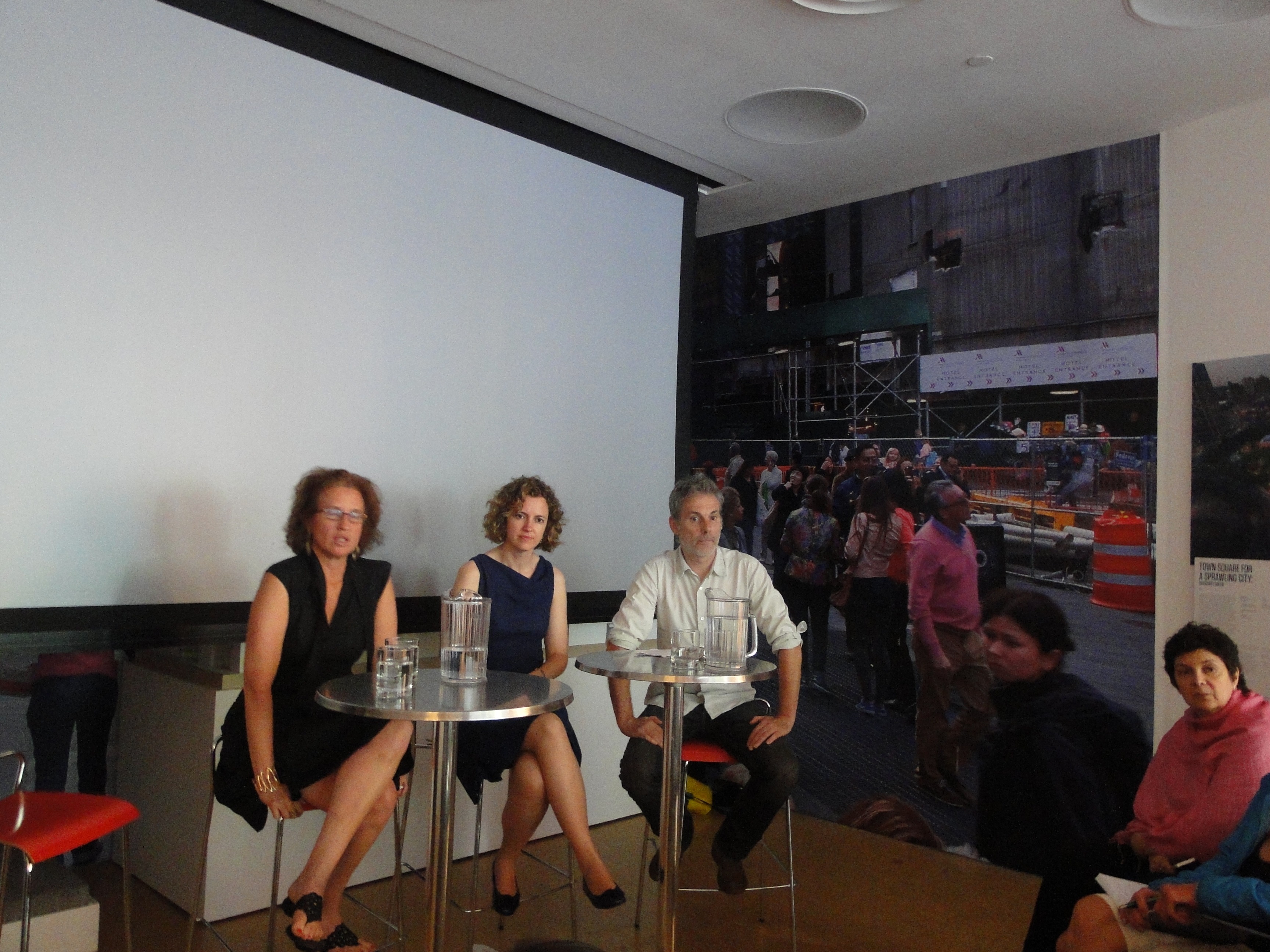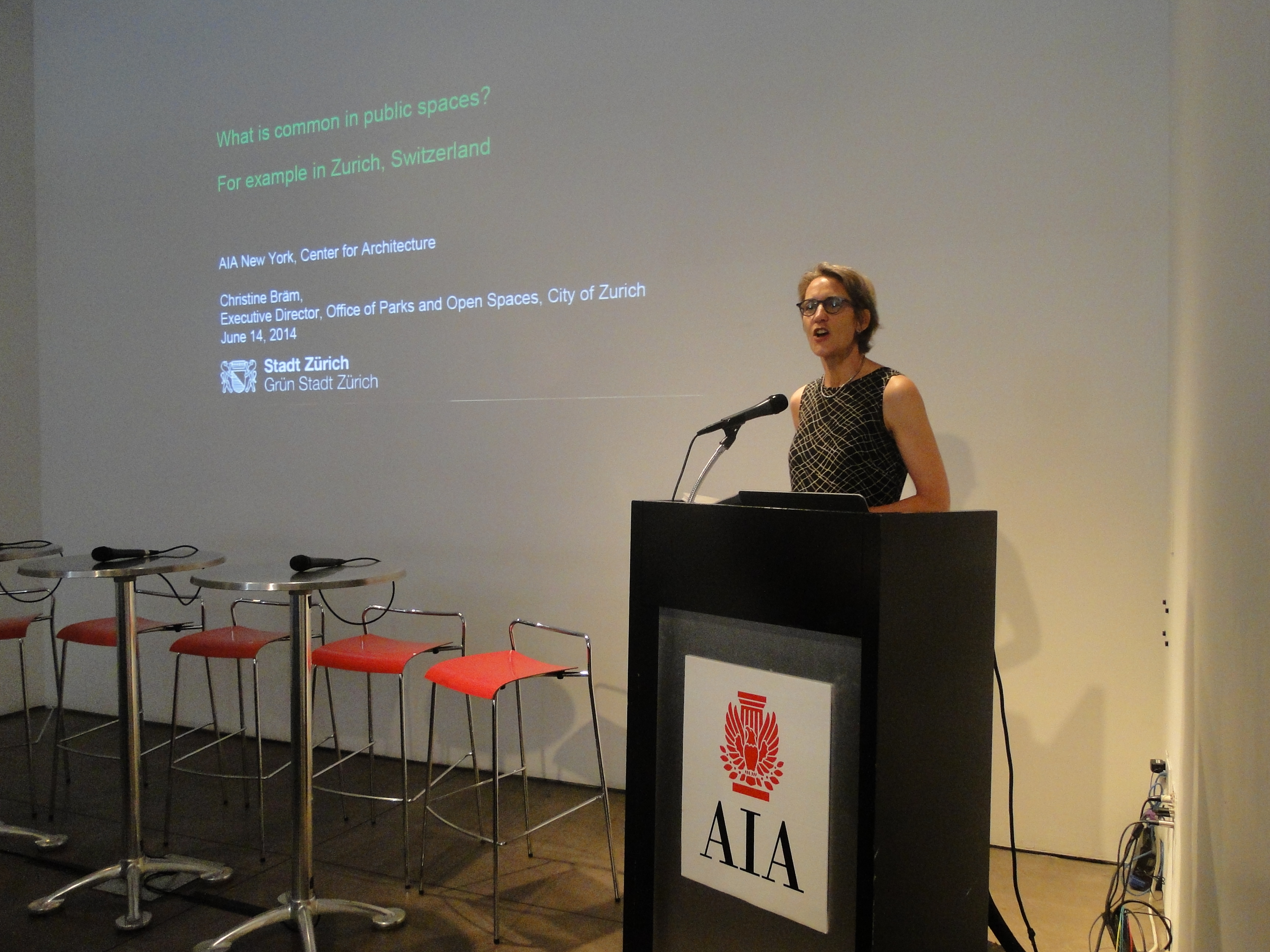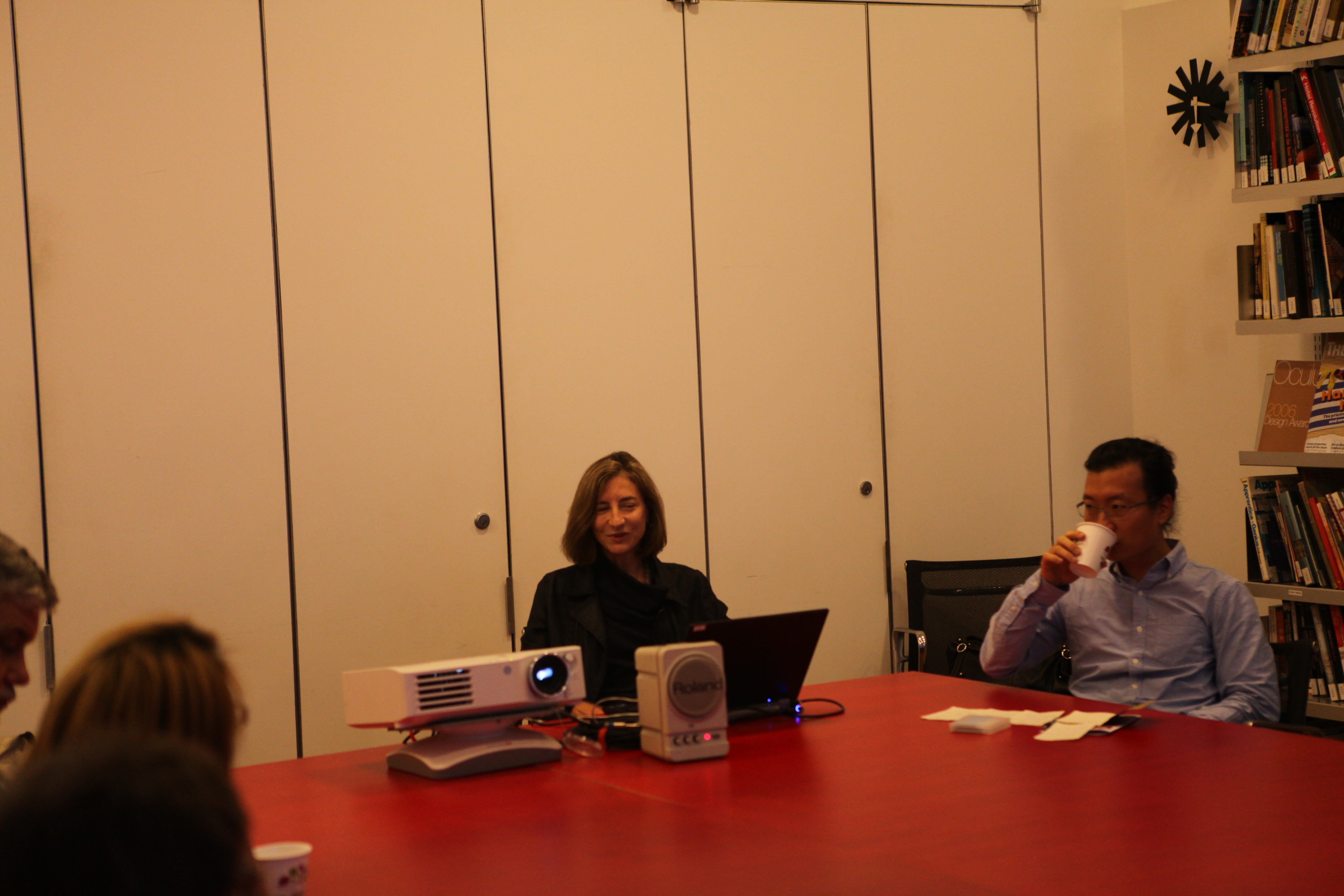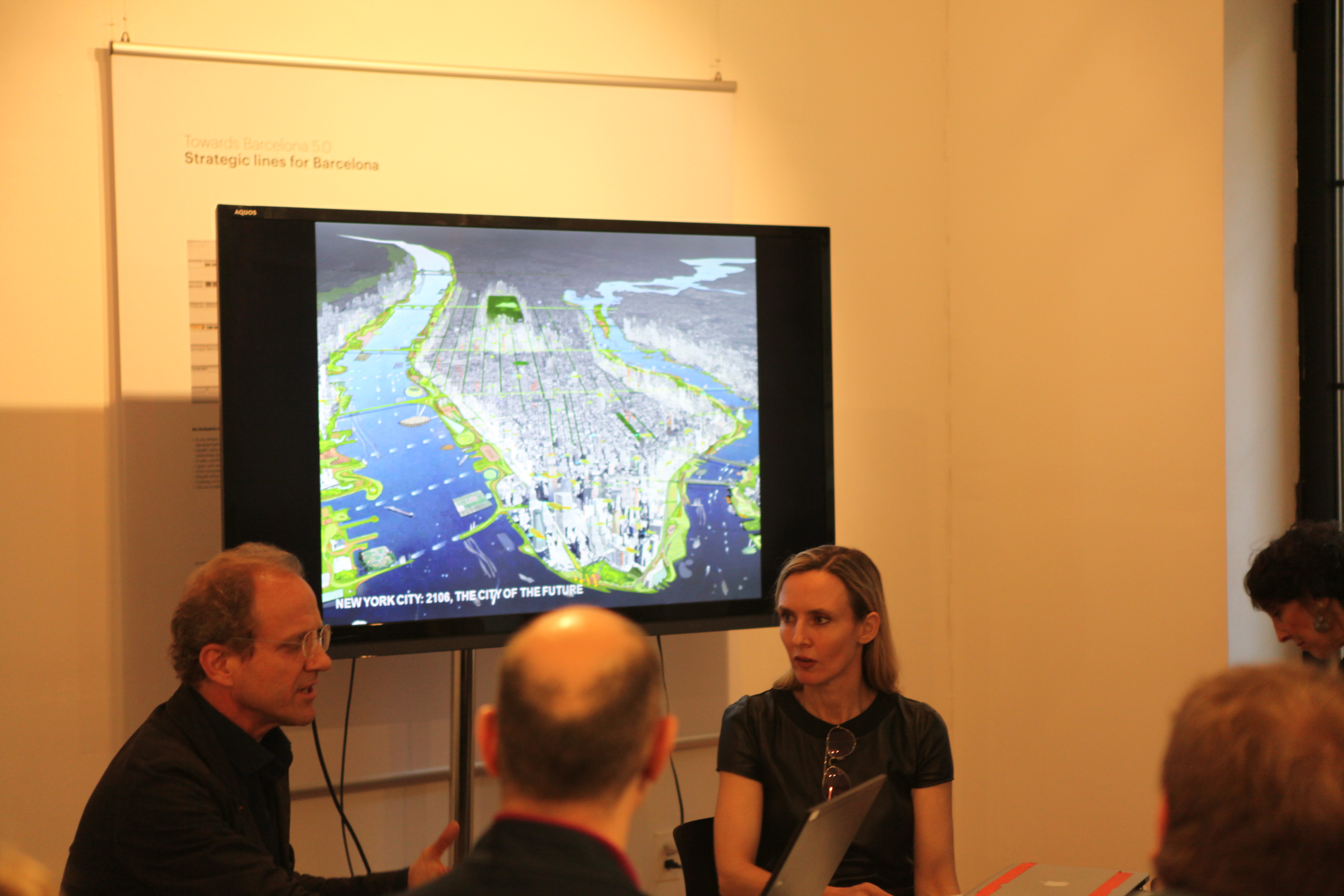by: Bill Millard
Nearly everything important in a living democracy takes place in public space: expression that’s politically or artistically consequential, transactions that drive the productive parts of the economy, the movements of people (individually or massed) for the sake of necessity or curiosity or joy. There may be no better barometer of a society’s well-being or a city’s residential desirability than the quality of its public spaces. Yet they have recurrently been treated as amenities and managerial afterthoughts, an early target for budgetary cutbacks. The very idea of a municipal office dedicated to them, a Director of Public Space, is something that AIANY President Lance Jay Brown, FAIA, recalled suggesting a few years ago with tongue in cheek, “a Monty Python title” no more likely to be institutionalized within City Hall than the Ministry of Silly Walks. Discovering that Zurich actually has such a position, ably filled (and eloquently explicated here) by Christine Bräm, was a watershed moment, Brown noted. Perhaps city governments occasionally can conceive of this universal and essential aspect of cities as their legitimate concern.
They will do a stronger job of it when held accountable by the probings and provocations raised by the architects, artists, planners, and activists who spoke at the “Open to the Public” symposium, closely integrated with curator Thomas Mellins’s exhibition and with the AIANY Chapter’s “Civic Spirit: Civic Vision” presidential theme for 2014. This tightly organized, information-packed meeting gave the audience a few shocks – e.g., among Cushman & Wakefield risk-management specialist David Kelly’s images, a page from Al Qaeda’s Inspire magazine depicting a razor-blade-studded pickup truck as “the ultimate mowing machine” (it’s not meant for lawns), reminding everyone why security concerns in high-profile places like Times Square or the World Trade Center can never be a pro forma matter. More often, the panels offered insight into constructive principles guiding the design and operation of public space. From Bräm’s keynote (connecting Switzerland’s practical maintenance of the commons in both cities and the countryside, its procedures of direct democracy, and its cultural recognition that “my freedom ends where the freedom of my neighbor begins”), to the concluding discussion by the city’s new commissioners of City Planning and Parks (Carl Weisbrod and Mitchell Silver, respectively, both emphasizing the De Blasio administration’s bottom-up priorities and the synergies possible when previously fiefdomlike agencies cooperate), the discussions suggested that difference and even turbulence, viewed as civic vigor rather than disorder, are values worth accommodating through design.
Zuccotti Park during the Occupy movement served as a test case and a recurrent touchstone. As a privately-owned public space not subject to city park regulations, its 24-hour openness made it a strategic site where the social tensions of a plutocratic era could find vigorous and nonviolent release. Its model proved viral, spreading to other cities and changing the national discussion about economics and free expression, concerns that need weighing alongside the privileges associated with land ownership. As Ron Shiffman, Hon. AIA, noted in describing the different forms of civic engagement open to different cultural groups, “If they’re a strong group, if they’re the 1%, they sit down, pick up the phone, call the mayor, and they get what they want. If they are the bottom 99%, they have to occupy Zuccotti Park.” Since segments of the population have different senses of aesthetics and order, he continued, designers analyzing and shaping civic spaces need to recognize competing, sometimes contradictory elements contributing to social integration and cohesion. The appropriate metaphor is not a melting pot but a quilt.
The proposed Queensway, a linear park stretching across five neighborhoods to convert an abandoned railway into a cultural corridor (potentially including Hyuntek Yoon’s Upside-Down Bridge as a multipurpose component), replicates a High Line-like physical typology in residential areas quite unlike Chelsea. Such a project calls for vastly different assessments of people’s needs and dreams than a tourist magnet like the High Line has done. Attention oscillated between the urban grit valued by Bernard Tschumi, FAIA, who fondly recalled the pre-renovated High Line’s pirate uses, and disparaged the safe, suburbanized “Muzak of artifacts” that he finds in some Bloomberg-era projects, and the different senses of urbanity prized in some outer-borough areas. Susannah Drake, AIA, ASLA, noted that in certain communities along the Queensway, residents express an aversion to the term “urban” altogether. The equity concerns that are rising to the forefront under Mayor De Blasio imply that the public spaces outside Manhattan are due for more attention in the coming years, bearing in mind that one person’s civic improvement is another’s gentrifying, job-displacing, rent-inflating nuisance.
Architect/composer Christopher Janney and sculptor Ned Smyth discussed spaces and installations, such as Janney’s Reach (interactive instruments at the 34th Street N/R platform) and Smyth’s Upper Room in Battery Park City, that function as what Janney called a “social foil,” instigating interaction among strangers. Such moments are all too rare in a city that has the dual identity suggested in a rhetorical question by David Dixon, FAIA: “Is New York a community or 5,000 communities?” Neighborhood-level fragmentation, in which some areas were organic/historical centers for groups as specific as “Catholic Lithuanian steelworkers,” is on the wane; few live in isolation from social difference any more. This mixing phenomenon extends well beyond New York, of course: sociologists have found that Houston, as Discovery Green president Barry Mandel observed, no longer has ethnic majorities, just several groups comprising no more than about 30% of the population each (a blended enough condition, he noted, that a recent “Music Around the World” event presented Chinese performers of Tejano music). Organized as a public/private/philanthropic endeavor and guided by the Project for Public Spaces’ placemaking principles, Discovery Green converted two parking eyesores into a vibrant downtown park: a coherent new cultural center for an unzoned city once synonymous with nothing but oil dependence and formless sprawl.
While well-crafted civic spaces are inherently civilizing, not all of their potential occupants are civilized. What moderator David Burney, FAIA, termed “the most important panel of the day,” formally titled “Ownership and Propriety in Public Space,” directly addressed the tensions between expression and security. Kelly drew a critical distinction between security and safety: security against violent fanatics favors restricting access, while safety from different, non-motivated threats (vehicular violence, natural disasters) favors increasing access for emergency teams. The balancing act among these values and the spaces’ purposes requires calibration and negotiation, and some degree of risk is inevitable: no space can be perfectly secure or safe, and some measures drastically overcorrect for ultra-rare risks (he closed with a slide of the Washington Monument behind Jersey barriers – car-bomb-proof, but forbiddingly ugly). To panelist Setha Low, on the other hand, “securitization” – an off-putting word, she acknowledged, for an off-putting concept – has already gone too far, propagating fear of the Other through seven forms, from the physical to the conceptual: spatial enclosure, surveillance, rules and regulations, private governance, changing private and public property relations, the financialization of everyday life, and a “new moral geography” that values some lives (those who spend freely, mainly) above others. Failing to respect all lives, of course, is exactly what the truck-bombing micro-minority does.Thankfully, no one in the room voiced the overfamiliar post-9/11 line that if cities overreact to attacks, “the terrorists win,” but it was clear that in locked-down, militarized spaces, nearly all of us lose. In contrast, Low praised traditional urban forms that foster inclusion, including those observing Holly Whyte’s principles for vibrant plazas, “designing people in,” and communicating through cultural symbols that public spaces are meant for everyone, not only for the privileged.
This conversation, in different hands or different settings, could easily have become a polemical shouting match. It is to the credit of the panelists and organizers that such an airing of ideas could happen with a singularly high signal-to-noise ratio, an atmosphere of respect, and an eye toward achievable measures – precisely the qualities that characterize well-thought-out public spaces themselves.
Event: Open to the Public Symposium
Speakers: Lance Jay Brown, FAIA, 2014 President, AIA New York Chapter; Thomas Mellins, Curator, Open to the Public: Civic Space Now exhibition; Christine Bräm, Executive Director, Office of Parks and Open Spaces, City of Zurich (opening keynote); Adrian Benepe, Senior Vice President, The Trust for Public Land (keynote respondent); Susannah Drake, AIA, ASLA, Principal, dlandstudio (moderator, Enlivening and Enjoying Public Space); Judit Carrera, Director of the European Prize for Urban Public Space, Center for Contemporary Culture of Barcelona; Christopher Janney, Composer/Artist/Architect, PhenomenArts, Inc.; Ned Smyth, Sculptor; Bernard Tschumi, FAIA, Principal and Founder, Bernard Tschumi Architects; David Dixon, FAIA, Senior Principal, Stantec Urban Group Leader (moderator, Empowering Communities through Public Space); Ethan Kent, Senior Vice President, Project for Public Space; Barry Mandel, President and Park Director, Discovery Green, Houston; Ron Shiffman, Hon. AIA, Professor, Grad Center for Planning, Pratt Institute; Hyuntek Yoon, Architect, nooyoon; David Burney, FAIA, Chair of the Board of Directors, Center for Active Design; Professor, Pratt Graduate Center for Planning and the Environment (moderator, Ownership and Propriety in Public Space); David Kelly, Director, Risk Management Services, Cushman & Wakefield; Setha Low, Professor of Anthropology, Geography and Environmental Psychology, and Director of the Public Space Research Group, City University of New York; Laura Hansen, Executive Director, Neighborhood Plaza Partnership; Michael Arad, AIA, LEED AP, Partner, Handel Architects; Ana Coello de Llobet, Founder, Ana Coello Paisaje y Arquitectura; Olivier Philippe, Co-founder and Director, Agence Ter; Antoni Vives i Tomàs, Deputy Mayor of Barcelona; Leslie Koch, AIA, President and CEO, The Trust for Governors Island; Claire Fellman, ASLA, LEED AP, Director and Project Manager, Snøhetta; Carl Krebs, AIA, Partner, Davis Brody Bond Architects and Planners; Natalie Jeremijenko, Artist/Engineer/Inventor; Jonathan Marvel, FAIA, Principal and Founder, Marvel Architects; Marion Weiss, FAIA, Co-founder, Weiss/Manfredi Architecture/Landscape/Urbanism and Graham Chair Professor of Architecture, University of Pennsylvania; Tattfoo Tan, Artist; Carl Weisbrod, Chair, New York City Planning Commission; Mitchell Silver, Commissioner, New York City Department of Parks and Recreation
Location: Center for Architecture, 06.14.2014
Organizers: Center for Architecture
Sponsors: National Endowment for the Arts; FXFOWLE, Pei Cobb Freed & Partners, and Sciame (patrons); CetraRuddy, Grimshaw Architects, Ennead Architects, Pelli Clarke Pelli Architects, Peter Gisolfi Associates, Robert A. M. Stern Architects, Skidmore, Owings and Merrill, Studio Daniel Libeskind, and Thomas Phifer and Partners (sponsors); Capalino + Company, Desai Chia Architecture, Handel Architects, Ibex Construction, Kohn Pedersen Fox Associates, New York Building Congress, Stephen B. Jacobs Group, Syska Hennessy Group, TEN Arquitectos, Thornton Tomasetti, and Zetlin & De Chiara (supporters); Presence Switzerland (supporter of The Swiss Touch in Landscape Architecture)








